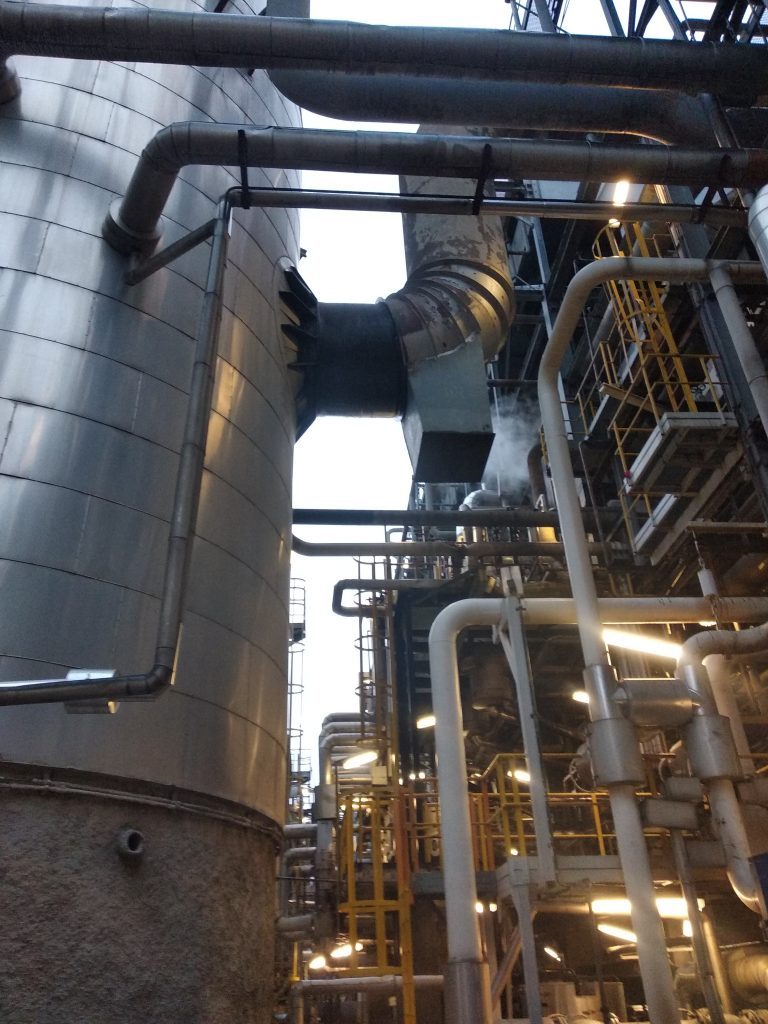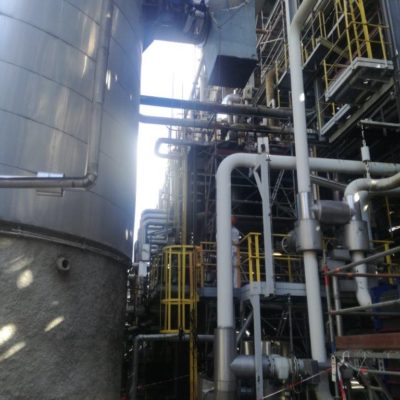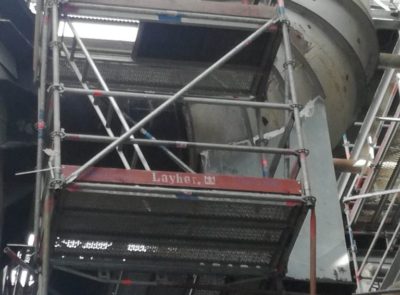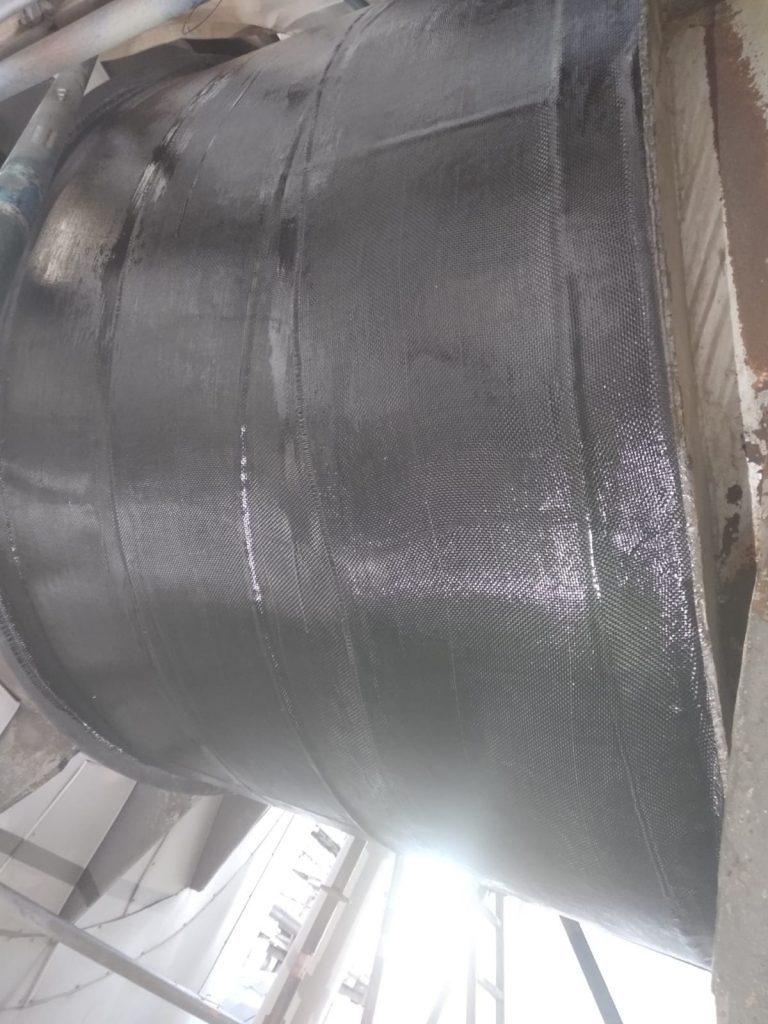Czech Republic
Pipe Details
- 2,000-mm (78.7-inch) diameter flare line 10 m (32.8 feet) above the ground
- 40% internal corrosion
- +100° C (212° F) Design Temperature
- 40° C (104° F) Ambient Temperature During Installation
Summary
- A 2,000-mm (78.7-inch) diameter flare line connector pipe had sustained extensive internal corrosion
- A 1-meter (3.28-foot) length of connector pipe needed emergency repair.
- CSNRI trained and certified technicians used specially built scaffolds to reach the repair area
- 3 technicians completed the repair in 5 hours
- The high-temperature line remained in service during repair
- No hot work was required
- No negative environmental impact
- No disruption to refinery operations
- Solution enabled additional 2 years of safe service.
Inspections at a refinery in the Czech Republic uncovered a horizontal connector pipe with reinforcing rings that had sustained 40% internal corrosion. The corrosion was slowly progressing along the 2,000-mm (78.7-inch) diameter flare line, which was transporting hot gases on a wind tower more than 10 m (32.8 feet) above the ground. Fearing a through-wall defect that could cause an explosion, the owner wanted to repair the line as soon as possible.
Having previously used a composite repair successfully, the immediate response was to begin looking for a composite solution for the corroded line. The search was complicated by the fact that the damaged section included complex geometry and was in an area of the refinery that was difficult to access. The repair would need to be carried out without taking the line out of service and would have to safely extend the working life of the connector pipe for two years.
There also were budgetary concerns. The solution would have to be inexpensive but deliver the safety and quality demanded by the refinery owner.
Using ropes to access the flare line, CSNRI experts assessed the damage and suggested carbon fiber DiamondWrap® with HTA (High Temperature Ambient) epoxy for the repair. The DiamondWrap® system includes a bidirectional weave of carbon fiber and a 100% solids epoxy that form a composite system stronger than steel. Its low profile enables installation in confined spaces and on irregular surfaces.
The composite system forms a pipe around a pipe, and each successive wrap increases the strength and pressure rating.




The bidirectional weave of the carbon fiber provides strength in both the hoop and axial directions with little or no creep over time. This means there is no reduction in strength as the composite ages.
Once the solution was determined, local CSNRI trained and certified technicians from SEPS AS mobilized to the site to install the repair. Because of the access constraints and the height of the flare line, it was important to make precise arrangements with the company that would build the scaffolding as well as the workers responsible for sandblasting the surface of the pipe to prepare it for the composite repair.
When the preparatory work was completed, a team of 3 technicians reached the repair area using rope access and restored the integrity of the damaged pipe. The team undertook the challenge of wrapping 508-mm (20-inch) wide swathes of fiber carbon cloth around the 2,000-mm (78.7-inch) diameter flare line and was able to complete the installation in 5 hours from sandblasting to final placement of the composite wrap.
Installers completed the repair within 4 working days of the initial inquiry without introducing negative environmental risks or hot work and without disrupting refinery operations.

